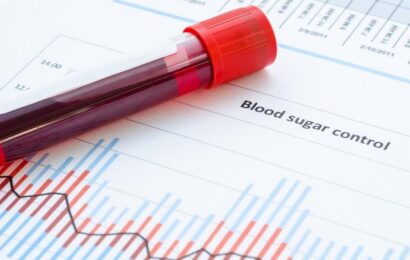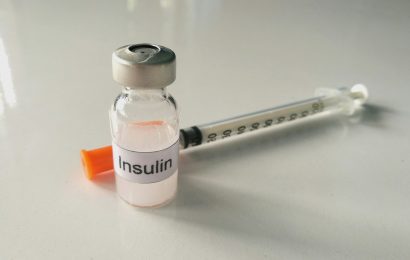Milk drinkers seem to be a thing of the past. Growing up, I remember having to drink milk every night with my dinner, and that habit stayed with me long after I started living on my own. I don’t drink milk as much now, although I do use it on my cereal and enjoy a cup of hot chocolate on a cold day.
Like other carbohydrate foods, though, milk has somewhat of a bad reputation, depending on who you talk to. Back in the early 1990’s, a study was published in The New England Journal of Medicine reporting that people with Type 1 diabetes had much higher levels of antibodies to a specific type of milk protein that is similar to a protein found on beta cells (the ones that make insulin). The theory went that the antibodies to this milk protein destroyed beta cells. And some other studies have suggested that exposing infants to cow’s milk before the age of one may increase the risk of Type 1 diabetes. But these theories haven’t been proven yet.
Another issue with milk has to do with a lack of tolerance. Lactose intolerance, that is. Lactose intolerance isn’t the same as a milk allergy. Rather, it’s the inability to digest lactose, a type of sugar found in milk and milk products. This happens due to a lack of an enzyme called lactase. Symptoms include abdominal pain, bloating, gas, nausea, and diarrhea. Adults are more likely to have lactose intolerance, as well as African-Americans, Hispanic Americans, Asian Americans, and Native Americans. Lactose intolerance can be managed by taking the lactase enzyme before drinking milk or eating milk products or by consuming lactose-free dairy foods.
Why drink milk anyway? Besides the fact that it tastes good, milk definitely has nutritional merits. For example, milk contains calcium, vitamin D, protein, potassium, and other vitamins, and there’s some evidence that drinking milk can strengthen bones, lower blood pressure, and reduce the risk of heart disease and colon cancer. An 8-ounce glass of low-fat (1%) milk contains 105 calories, 2.5 grams of fat, 1.5 grams of saturated fat, 8.5 grams of protein, 12 grams of carbohydrate, and 314 milligrams of calcium.
Other Options
Do you have to drink milk? No. Can you get the nutrients found in milk from other sources? Yes. Maybe you hate milk, are allergic to it, are intolerant of it, or don’t buy it because it ends up going bad in your refrigerator. There are other choices that you might consider, especially if pouring water on your breakfast cereal isn’t all that appealing. Here are milk “alternatives” (note that some are still animal products) that can open up options to you.
Lactose-free milk. Yep, this is still cow’s milk, but the milk has been treated with the lactase enzyme, so if your stomach churns and gurgles after drinking milk, you might try lactose-free milk and see if that helps. Choose nonfat or low-fat milk, though, to limit your saturated fat intake.
Raw milk. Raw milk is also cow’s milk but it hasn’t been pasteurized. Pasteurization kills potentially harmful pathogens, like E. coli and salmonella. Raw milk enthusiasts believe that pasteurization also kills off beneficial bacteria that can aid digestion and promote health. Your choice, of course, but drinking raw milk may put you at risk for food-borne illness and infection. The CDC reports that 82% of milk-borne illnesses between 1973 and 2008 were caused by raw milk.
Soy milk. Not really a “milk”, soy milk is made from soybeans (obviously) and is a vegan (completely animal-free) product. It may taste slightly sweeter and is a little more watery than cow’s milk. Many people who are allergic to cow’s milk use soy milk instead. Eight ounces of light soy milk contain 70 calories, 2 grams of fat, 0 grams of saturated fat, 6 grams of protein, 8 grams of carbohydrate, and 300 milligrams of calcium. Watch out for chocolate or vanilla soy milk, as these varieties contain more carbohydrate than the plain version, and be sure to choose a soy milk that is fortified with calcium, vitamin D, and vitamin B12.
Rice milk. Rice milk is made from rice, brown rice syrup, and rice starch. It may also contain added thickeners and sweeteners. Like soy milk, rice milk is an option for vegetarians or folks who have a lactose intolerance, or milk or soy allergy. The downside of rice milk is that it’s higher in carbohydrate and much lower in protein than soy and cow’s milk. Eight ounces of rice milk has 120 calories, 2.5 grams of fat, 0 grams of saturated fat, 1 gram of protein, and 23 grams of carbohydrate. If you drink it, choose a variety that’s fortified with other nutrients.
Almond milk. This milk is made from ground almonds and water. Nutrients, such as calcium and vitamin D, are usually added. Almond milk is also suitable for vegetarians, allergy-sufferers, and those who are lactose intolerant. Of course, if you’re allergic to almonds or other tree nuts, it’s best to avoid this milk. Like rice milk, almond milk is low in protein. It’s also fairly low in calories, however. Eight ounces contains just 60 calories, 2.5 grams of fat, 0 grams of saturated fat, 1 gram of protein, 8 grams of carbohydrate, and 200 milligrams of calcium. Almond milk isn’t a nutritional superstar, but it does have a pleasant, nutty flavor, and it’s lower in calories and carbohydrate than other “milks.”
Hemp milk. I’ll bet you didn’t know there was such a thing! Hemp milk is made from the seeds of the same plant that is used to make marijuana, but don’t worry — hemp seeds don’t contain the psychoactive ingredients found in marijuana. Hemp milk has a strong, nutty flavor and contains omega-3 fatty acids, protein, and iron. Eight ounces of this beverage has about 100 calories, 6 grams of fat, 0.5 grams of saturated fat, 4 grams of protein, and 8 grams of carbohydrate. It’s an option for those allergic to soy, nuts, and milk protein.




